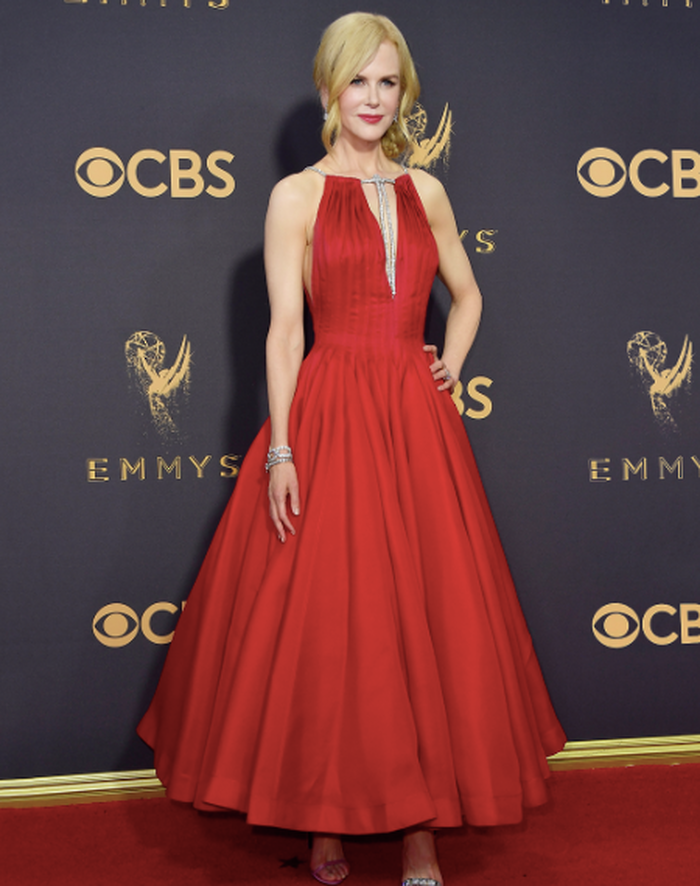The blossoming of Jeremy Scott and Moschino
Columnist Vivienne Hopley-Jones takes a look at Jeremy Scott’s latest collection for Moschino and his personal journey as a designer
“My clothes aren’t for critics, my clothes are for people.” Known to be a Marmite figure among fashion lovers, Jeremy Scott, current artistic director of Italian label Moschino, remains somewhat an outsider to the elite world of high-fashion to which he always aspired.
Scott’s runway expressions are an unusual blend of political statement and simple humour, and whilst the first half of this season’s show was predictable, the second half of the Moschino runway show for SS18, held in LA, was the love child of art and botany: exquisite and intelligent, the collection was budding with potential.
“Instead of the subtle pastels and faded woody colours of Dior, Scott was brazen and extravagant.”
The first half of the show featured looks that were typically Moschino-esque, with a jarring blend of child-like pastels and graphics, punk-inspired pieces and My Little Pony tees paired with fishnets and biker jackets. However, to me, the iconography characteristic of Scott’s work at Moschino (reminiscent of his first collection for the house in 2014 which consisted of garish fast food marketing) did not feel new or fresh.
Indeed, Scott has been widely criticised by fashion’s inner circle following his first collection for Moschino. This was a stark comment on a society obsessed with consumerism and dominated by fast fashion, illustrated through primary-coloured clothes and heavy use of fast food logos, most significantly merging the golden arches of McDonalds with Moschino’s own logo. Yet the gaudy design and inherent sarcasm in his work is precisely what has made him a success in youth culture and among consumers, leading to the revival of the Italian label of which he is now artistic director.
Then came the second half, and Scott’s efflorescent talent came into its own. I don’t always speak Moschino (or Italian), but I did understand Scott’s exquisite language of flowers. Models became blooming bouquets in one of Scott’s most innovative collections to date. Thick white fabric was wrapped to create dynamic bouquets as abundant, brightly coloured flowers poured out, framing the model’s faces. The boyish cropped hairstyles complimented the floral imagery perfectly. The fresh looking cuts were artistically reminiscent of budding flowers, balancing out the extravagant blooming dresses which filled Scott’s runway-turn-garden.
Like everything which Scott creates, the floral-inspired collection was in no way similar to other major and traditional fashion houses’ takes on such an over-saturated theme. Compared to Dior’s SS17 show which, set in a fairy-tale woodland, pulled on romanticism with its use of florals and inspiration from nature, the Moschino runway was much more garish in it’s use of nature. Instead of the subtle pastels and faded woody colours of Dior, Scott was brazen and extravagant.

Seeing red: the world’s latest hue
There was a fierce femininity in the collection: Scott took the icon of the flower which is traditionally, in a historical and literate sense, associated with women and used it in a fierce and bold way. The looks are unsubtle and unapologetic, and there is magnificence in their size and beauty. The structured gowns are at once beautiful and powerful; a deep violet gown the shape of a tulip stands out among the collection.
In this collection, Scott has married his daring creativity with a more mature take on fashion, and the results are breathtaking. His designs are striking and dynamic: the shape of them is as absorbing as the beauty of the collection, reminding the fashion world of his artistic origins. The maturity of the collection in comparison to his previous work may suggest that perhaps this marks the beginning of a new era for both Moschino as a major fashion house and for Jeremy Scott himself. He has moved away from echoing his earlier work and instead has combined his quirky creativity with a more classic design, creating a collection defined by a sense of artistic integrity
 News / CUP announces funding scheme for under-represented academics19 December 2025
News / CUP announces funding scheme for under-represented academics19 December 2025 News / SU reluctantly registers controversial women’s soc18 December 2025
News / SU reluctantly registers controversial women’s soc18 December 2025 News / Cambridge welcomes UK rejoining the Erasmus scheme20 December 2025
News / Cambridge welcomes UK rejoining the Erasmus scheme20 December 2025 Features / Should I stay or should I go? Cambridge students and alumni reflect on how their memories stay with them15 December 2025
Features / Should I stay or should I go? Cambridge students and alumni reflect on how their memories stay with them15 December 2025 Film & TV / Timothée Chalamet and the era-fication of film marketing21 December 2025
Film & TV / Timothée Chalamet and the era-fication of film marketing21 December 2025










